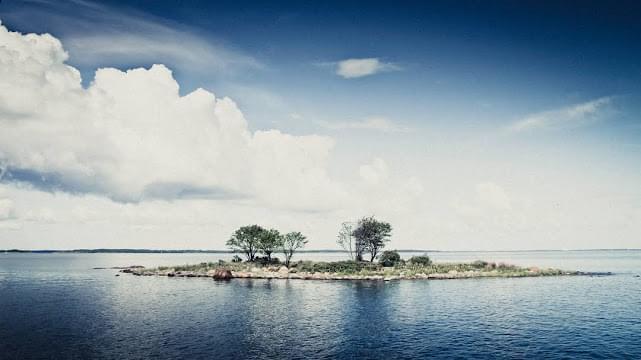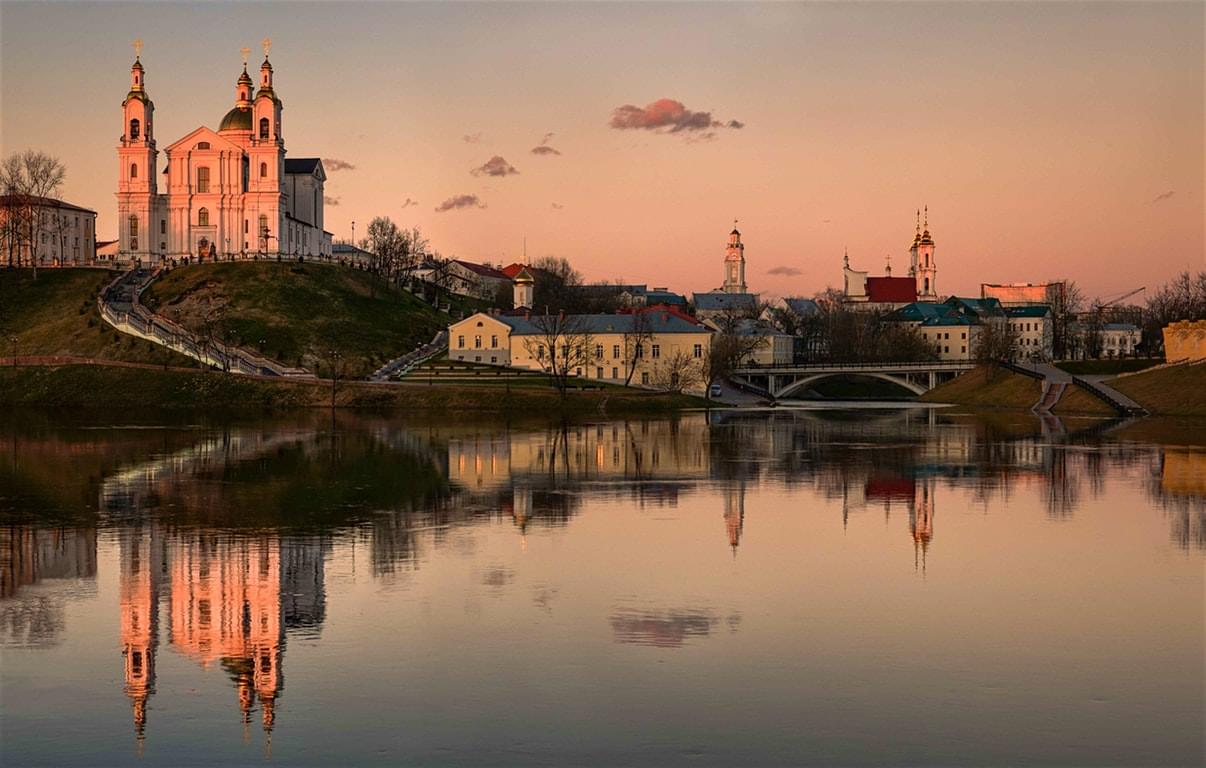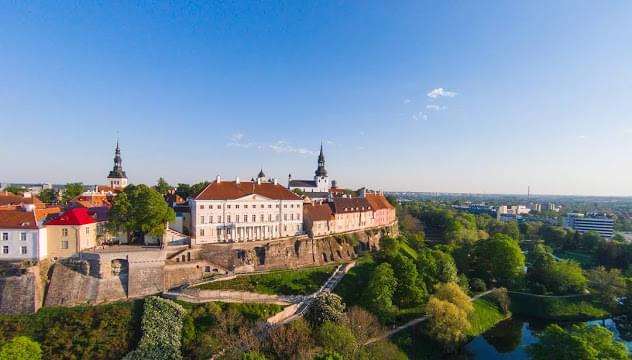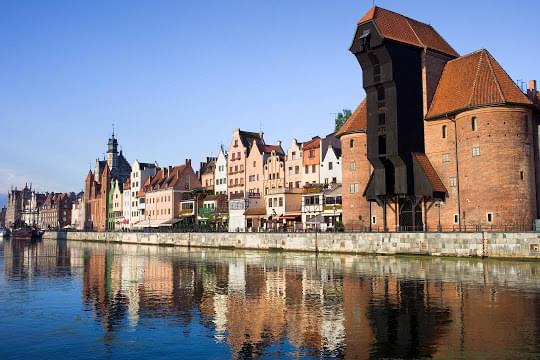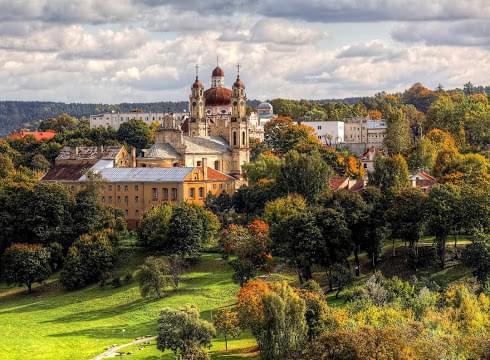
Lithuania 🇱🇹
Last updated:
Lithuania is part of Europe with main city at
Vilnius. It's usually 🌤️ 6.25 °C in Lithuania with a rainfall of 🌧 38.24 mm. Internet speed in Lithuania is on average 14.3 Mbps. In Lithuania you drive on the right side. Its Developed country with a
population of 3M people. The main currency is Euro. The languages
spoken are Lithuanian. Automatic teller machines are common in Lithuania. Current travel safety advice is Exercise normal safety precautions. Get other useful information like socket plugs, SIM cards and emergency numbers.
👍 Developed 🌤️ ~6.25 °C 🌧 ~38.24 mm 👨👩👦👦 3M people
Lithuania Travel Advice
🛡️ Travel safety
Exercise normal safety precautions
Expect enhanced security measures and possible travel disruptions in the lead-up to and during the NATO Summit being held in Vilnius on 11-12 July.
We advise:
Exercise normal safety precautions in Lithuania.
Issue date: Lithuania Weather
🌤️ Temperature
🌧 Rainfall
Lithuania Essential travel details
🔌 Plugs
Lithuania uses 230V, 50Hz with sockets and plugs Type C and Type F.
🌐 Languages
The languages that are typically spoken are
Lithuanian
Money in Lithuania
💱 Currencies Used
Lithuania uses the euro (symbol: €), code EUR.Banknotes come in denominations of 500, 200, 100, 50, 20, 10 and 5 euros. Euro is subdivided into 100 cents. Coins come in denominations of 2 and 1 euros and 50, 20, 10, 5, 2 and 1 cents.
💳 Cards
Widely accepted
Credit cards are widely accepted within Lithuania (at hotels, shops, and restaurants, travel agencies, car-rental agencies etc.). Visa, MasterCard and Maestro are the most widely accepted. American Express is less common. Diners Club is pretty rare. Discover, JCB, UnionPay and RuPay are unknown.
🏧 ATMs
Automatic teller machines are common in Lithuania. You can usually find them in both large & small cities.You do not need a chip & PIN card to use an ATM — your standard magnetic card will work fine.
Calling in Lithuania
📡 Internet
Internet speed in Lithuania is on average 14.3 Mbps.
WiFi coverage in Lithuania is very high. Most hotels, hostels, cafes, restaurants and bars have it.
📱 Phones
You can buy a SIM card for about €3.92, which includes 1 GB of data plan. You can choose from 3 telecoms: Bit?, Tele2 or Teledema.
Lithuania uses GSM mobile networks GSM 900 and GSM 1800.
If you don't want to buy SIM card in Lithuania upon arrival, make sure to check the roaming charges with your telecom provider before your departure so there are no surprises when you return home.
📞 Calling
To call Lithuania, dial +, then 370 (the country code for Lithuania), then the area code (without the initial 8) and the local number.
For local calls within Lithuania, start with the area code (with the initial 8). In the case above area code is 312 .
Driving in Lithuania
🛣️ Road rules
In Lithuania you drive on the right side. Most cars have manual transmission (stick).
Unless otherwise posted, the speed limits for cars and motorcycles are as follows: 120 km/h (74 mph) on expressways, 130 km/h (80 mph) on motorways, 50 km/h (31 mph) in all built-up areas and 90 km/h (55 mph) on undivided highways.
Right turn on red lights is strictly forbidden unless an additional green semaphore arrow allows it.
It is illegal to drive with blood alcohol content higher than 0.04%.
🚦 On the road
Road assistance is available at 1810 (Falck). For general news on Lithuania's traffic use eismoinfo or Eismoinfo.
Most popular petrol stations in Lithuania are Circle K, Lukoil, Neste, Q8 and Orlen.
Petrol (unleaded) gas options are called bešvinis benzinas or Bešvinis benzinas (95/98). Petrol costs about €1.05 per liter.Diesel option is called Dyzelinas.
🆘 Emergency
Universal
112
Police
112
Ambulance
112
Fire department
112
Lithuania country map
Lithuania travel details
It's important to consider getting travel medical insurance to ensure you're covered in case of unexpected medical emergencies.
For just $42, you can get coverage for 4 weeks, providing peace of mind and financial protection while you're away from home.
Fly to Lithuania
✈️ best flight deals
from1000+providers
from1000+providers
Stay in Lithuania
🛏️ hottest hotel deals
upto20%OFF
upto20%OFF
Insurance in Lithuania
🏥 travel insurance cover
$1.45 / day
$1.45 / day
Money in Lithuania
💳 access money easily
0,00 €ATM fees
0,00 €ATM fees
Drive in Lithuania
🚙 best car rentals
0,00 €cancellation
0,00 €cancellation
Useful Information
Find other useful infromation when you are travelling to other country like visa details, embasssies, customs, health regulations and so on.
